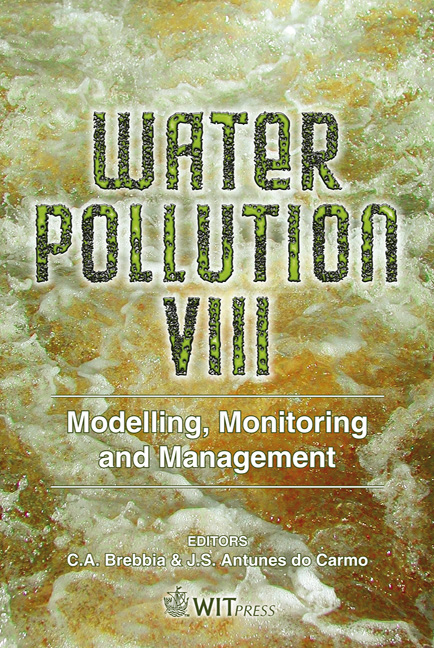Experimental Analysis Of First Foul Flush In An Industrial Area
Price
Free (open access)
Transaction
Volume
95
Pages
10
Published
2006
Size
615 kb
Paper DOI
10.2495/WP060421
Copyright
WIT Press
Author(s)
S. Artina, A. Bolognesi, T. Liserra, M. Maglionico & G. Salmoiraghi
Abstract
This paper is about a monitoring study carried out in a commercial-industrial site near Bologna (Italy). The experimental activity aims to determine a suitable relationship between single pollutant components and the hydrological response of catchment related to this specific kind of anthropic activity. The experimental catchment is part of a stocking area, run over every day by several trucks. The watershed area is about 1.15 ha, almost completely impermeable, including a parking area and charge-discharge zone for trucks and also a small part of the warehouse building roofs. Storm water is collected by a small drainage system into a first foul flush tank, whose useful volume is about 36 m3. In order to study both hydraulic and water quality aspects, the site has been equipped with several instruments, like an automatic sampler, rainfall gauge, submerged level sensor, turbidity meter and a multiparametric probe. Rainfall data, tank water level and turbidity have been recorded continuously for 8 months; during that period 57 rainfall events (> 1 mm) have taken place (total rainfall of 451mm). For five of those events, samples were collected and analyzed obtaining TSS, COD, heavy metals, toxicity and other parameters concentration. Results obtained from the acute toxicity tests, carried out with Vibrio Fischeri on water samples collected have exhibited some particular effects caused by the bio-ecological conditions of runoff stormwater. An important issue comes from the lack of a clear linear correlation between organic, inorganic pollutants and the toxicity percentage. Keywords: experimental catchment, first flush, total suspended solids, toxicity, turbidity.
Keywords
experimental catchment, first flush, total suspended solids, toxicity, turbidity.





